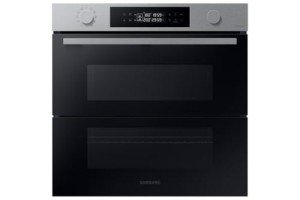Understanding Built-in Ovens and Hobs: The Perfect Kitchen Combination
As modern kitchens progress, built-in appliances are ending up being increasingly popular for both performance and looks. Among hob and built in oven package , built-in ovens and hobs stick out as essential components for any cooking lover or home cook. This article explores the benefits, features, and considerations surrounding built-in ovens and hobs. It likewise attends to typical questions, providing a comprehensive guide to these kitchen fundamentals.
What are Built-in Ovens and Hobs?
Built-in ovens are integrated into kitchen cabinets, producing a streamlined, seamless look. They come in various types, consisting of conventional, convection, and steam ovens, each catering to various cooking techniques. Hobs, on the other hand, are the cooking surface areas that incorporate with the kitchen counter top. They can be gas, electric, or induction, permitting cooks to pick based on their cooking design and energy preference.
Benefits of Built-in Ovens and Hobs
- Space-Saving: Built-in designs optimize kitchen space by getting rid of the requirement for freestanding systems, creating an open and airy environment.
- Visual Appeal: Their smooth design adds to a modern, structured look in the kitchen.
- Improved Functionality: Built-in ovens typically include sophisticated cooking innovation, offering a series of functions like self-cleaning and wise controls.
- Customization: Manufacturers use a variety of surfaces and designs, enabling house owners to customize their appliances to match their kitchen décor.
Kinds Of Built-in Ovens
1. Traditional Ovens
Standard ovens use glowing heat from the bottom and can be ideal for baking.
2. Convection Ovens
Convection ovens have a fan that circulates hot air, ensuring even cooking. They lower cooking time and are best for roasting meats or vegetables.
3. Steam Ovens
Steam ovens utilize damp heat to prepare food, protecting nutrients and tastes. They are ending up being increasingly popular among health-conscious cooks.
4. Microwave Ovens
These ovens supply fast heating and cooking and serve various functions, from reheating leftovers to baking.
Types of Hobs
1. Gas Hobs
Gas hobs use gas or propane for cooking. They provide instant heat control, making them a favorite amongst professional chefs.
2. Electric Hobs
Electric hobs have strong or ceramic surface areas that warm up via electric coils. They are simple to tidy but might take longer to heat than gas designs.
3. Induction Hobs
Induction hobs use electromagnetic energy to directly heat pots and pans, using quick heating and energy performance. They cool down quickly and supply a more secure cooking experience.
Aspects to Consider When Choosing Built-in Ovens and Hobs
When selecting built-in ovens and hobs, numerous aspects must be thought about:
1. Area Limitations
Measure the offered area in your kitchen to guarantee that the appliances will fit flawlessly into the kitchen cabinetry.
2. Cooking Style
Consider your cooking routines. If you often bake, a convection oven might be perfect. Meanwhile, induction hobs are terrific for security and effectiveness.
3. Budget plan
Pricing differs considerably based upon features and brand names. Setting a budget assists narrow down the choices.
4. Energy Source
Identify whether you want gas or electric appliances. This choice can affect cooking performance and utility costs.
5. Aesthetics
Pick finishes and designs that complement your kitchen's style. Stainless steel is a popular choice for a modern appeal.
Comparison of Built-in Ovens and Hobs
| Function | Built-in Oven | Built-in Hob |
|---|---|---|
| Type | Convection, steam, and so on. | Gas, electric, induction |
| Cooking Versatility | High | Moderate to high |
| Cleaning Ease | Differs by design | Usually easy to tidy |
| Setup Style | Integrated in kitchen cabinetry | Flush with countertop |
| Energy Efficiency | Varies by design | Induction usually most efficient |
Frequently Asked Questions About Built-in Ovens and Hobs
1. Are built-in ovens more costly than freestanding designs?
Yes, built-in ovens typically include a higher price due to their design and installation requirements. Nevertheless, they frequently provide advanced functions.
2. Can I replace my existing freestanding oven with a built-in model?
Yes, it's possible to change a freestanding oven with a built-in design, however you may need to make adjustments to your cabinets and kitchen design.
3. What upkeep do built-in ovens and hobs need?
Regular cleansing is essential. Lots of built-in ovens featured self-cleaning functions. It's likewise essential to keep the hobs complimentary of spills and grease.
4. Are induction hobs safe for households?
Induction hobs are thought about more secure than gas or electric alternatives since they only heat the pots and pans, decreasing the threat of burns or accidents.
5. How can I maximize the efficiency of my built-in oven and hob?
To take full advantage of performance, constantly preheat the oven when required, use the right size pots or pans on the hob, and think about using the residual heat from your hob after cooking.
Built-in ovens and hobs offer various benefits, making them popular choices for modern cooking areas. Their space-saving designs, advanced features, and aesthetic appeal contribute to their high demand. By considering factors like space, cooking style, and budget plan, homeowners can choose the best combination of appliances that best fit their cooking requirements. Whether through gas, electric, or induction hobs, and a range of oven types, the best built-in kitchen appliances can enhance the cooking experience while raising the general aesthetic of the kitchen.

